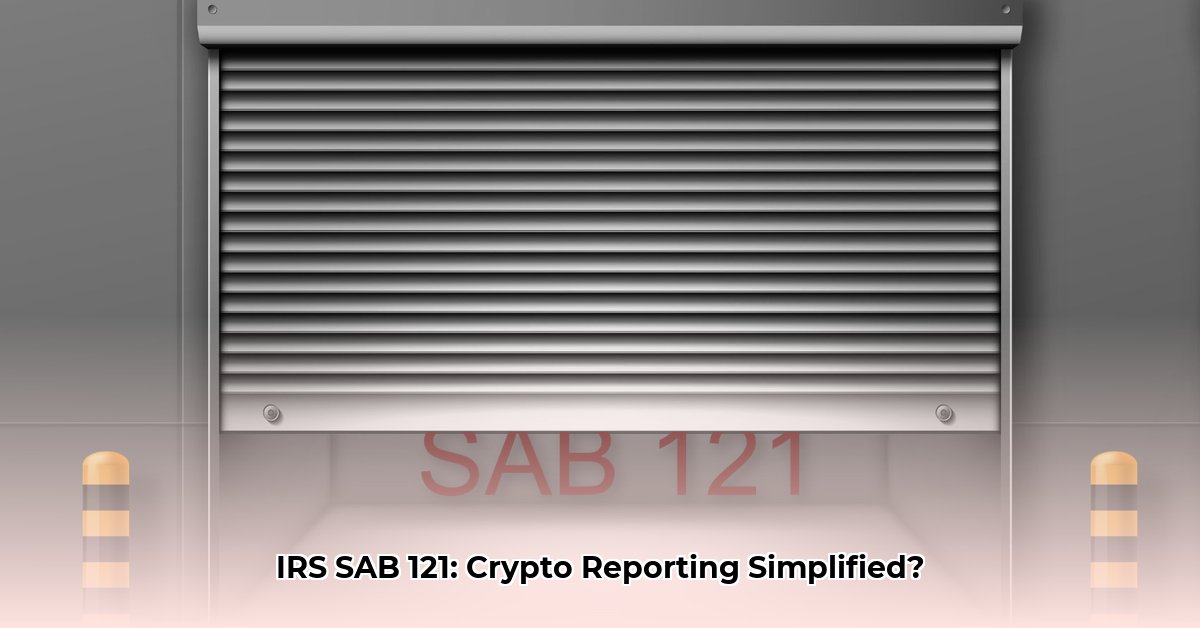
The Securities and Exchange Commission (SEC) has rescinded Statement of Accounting and Auditing Standards (SAB) 121, replacing it with SAB 122, significantly altering how public companies, auditors, regulators, and crypto platforms report crypto asset holdings. This guide provides a step-by-step approach to navigating this transition and ensuring compliance. For more on crypto risk, see information on crypto liquidation.
Understanding the Shift from SAB 121 to SAB 122
SAB 121 required companies to report crypto assets held for users as both assets and liabilities, based on fluctuating market value. This created complexities, especially given crypto's volatility. SAB 122 shifts the focus to the likelihood of loss. Instead of automatically recording a liability, companies now assess the probability of incurring a loss, aligning with established accounting principles such as ASC 450-20 (US GAAP) or IAS 37 (IFRS).
Key Differences: SAB 121 vs. SAB 122
| Feature | SAB 121 | SAB 122 |
|---|---|---|
| Liability Recording | Automatic, based on market value | Conditional, based on likelihood of loss assessment |
| Focus | Asset and liability recognition | Risk assessment and loss probability |
| Approach | Prescriptive | Principle-based, aligned with ASC 450-20 (US GAAP) or IAS 37 (IFRS) |
This nuanced approach means two companies holding similar crypto amounts might have different accounting treatments depending on their operational specifics and legal structures.
Navigating the Practical Implications
"Control" is paramount. If your company controls the crypto assets (either directly or through contractual agreements), you must report them on your balance sheet. Determining control involves careful examination of contracts and operational procedures. This requires understanding not just the accounting rules, but also the underlying business operations. Valuing these assets is challenging due to market unpredictability and evolving regulations.
Key Takeaways
- The transition from SAB 121 to SAB 122 necessitates a more nuanced approach to crypto asset reporting.
- Determining "control" and the probability of loss are critical for accurate liability assessment.
- The inherent volatility of crypto markets presents significant challenges in valuation and risk assessment.
Actionable Steps for Compliance
Here's how to ensure compliance with SAB 122:
- Retrospective Review: Review past financial statements and make necessary adjustments to align with SAB 122 requirements. This is crucial for accurate historical reporting.
- Transparent Reporting: Clearly explain your risk management approach and any potential losses in your financial reports. Transparency fosters trust with investors and regulators.
- Enhanced Risk Management: Strengthen internal systems and processes for securing crypto assets. Proactive risk management is essential to mitigate potential losses.
- Ongoing Monitoring: Continuously monitor changes in the regulatory landscape and adapt your reporting accordingly. The crypto regulatory environment is dynamic and requires constant vigilance.
Stakeholder-Specific Actions
The implications of SAB 122 differ across stakeholders:
| Stakeholder | Short-Term Actions | Long-Term Actions |
|---|---|---|
| Public Companies | Update financial statements; enhance transparency in reporting. | Continuously monitor regulatory changes; refine risk management strategies. |
| Auditors | Update audit procedures; assist clients with transition. | Develop specialized expertise in crypto asset accounting. |
| Regulators (SEC) | Monitor compliance; provide clarifications as needed. | Foster consistent regulatory structures for crypto asset reporting. |
| Crypto Platforms | Adjust internal systems to meet reporting requirements. | Improve security measures; cultivate strong relationships with regulators. |
Mitigating Key Risks
Several risks are associated with crypto asset reporting:
| Risk Category | Mitigation Strategies |
|---|---|
| Loss of Cryptographic Keys | Utilize multi-signature wallets, hardware security modules (HSMs), and robust key management practices. |
| Smart Contract Vulnerabilities | Conduct thorough audits, penetration testing, and implement bug bounty programs. |
| Exchange/Custodian Risk | Diversify custodians; perform rigorous due diligence; consider insurance. |
| Regulatory Uncertainty | Closely follow regulatory changes; engage proactively with regulators. |
| Market Volatility | Employ hedging techniques; conduct stress tests under various market scenarios. |
Conclusion: Adapting to a Changing Landscape
The transition from SAB 121 to SAB 122 requires a proactive and informed response. By understanding these changes and implementing the necessary adjustments, companies can ensure accurate, compliant, and transparent financial reporting. Ignoring these changes can lead to significant financial and legal consequences.